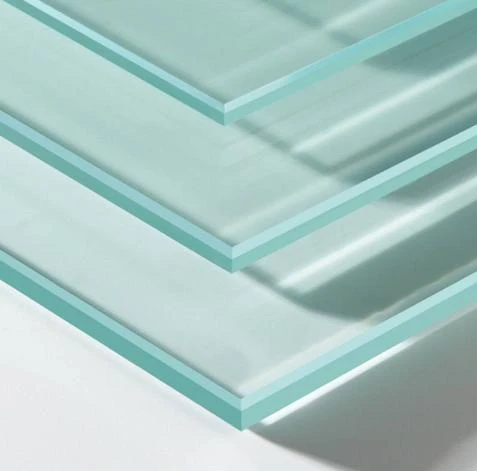The float glass manufacturing process stands as a cornerstone of modern architectural and automotive industries, thanks to its ability to produce high-quality, perfectly flat glass. A blend of precise engineering, innovation, and detailed craftsmanship is required to execute this process efficiently. It begins with the raw materials sand, soda ash, limestone, and various additives, which are melted in a furnace at over 1,700°C. Expertise in the formulation is crucial, as the adherence to specific proportions affects the quality and properties of the final product.

Once the raw materials turn into a molten glass mixture, it flows onto a bath of molten tin. This innovative method, pioneered by Sir Alastair Pilkington in the 1950s, revolutionized glassmaking. The glass floats effortlessly on the tin due to the perfect immiscibility and density difference between the two substances. This part of the process demands authoritative handling and monitoring to ensure that the glass spreads evenly across the tin bath, achieving the desired thickness and flawless surface.
During the cooling phase, the glass is carefully transferred through a controlled environment known as the lehr. Here, its temperature gradually decreases, a procedure requiring specialized expertise to alleviate any internal stresses and prevent warping or breaking. An in-depth understanding of thermal dynamics is involved, as improper cooling can result in structural weaknesses in the glass.

The specifics of the manufacturing process differ based on the final application. For instance, float glass intended for automotive use requires additional treatments, such as lamination or tempering, to enhance safety and durability. This particular domain demands professionals who not only understand the science behind glass but also remain updated with industry norms and certification standards.
float glass manufacturing process
In terms of experience, manufacturers constantly refine their techniques to enhance efficiency and reduce environmental impact. The recycling of cullet (waste glass) into the batch mixture is a testament to the industry's endeavor towards sustainability, something that only experienced manufacturers can effectively integrate into large-scale operations.
The reliability of float glass owes a great deal to stringent quality control measures. Simultaneously employing both traditional inspection techniques and modern automated systems ensures consistency and reduces defects. Highlighting this aspect is crucial, as it underscores the trustworthiness of the product. Clients, architects, and engineers depend on the uniformity and transparency of the glass for their projects, making consistent quality control an authoritative advantage in the market.
In conclusion, the float glass manufacturing process is a paragon of technological advancement and meticulous craftsmanship. It requires a blend of industry-specific expertise and years of practical experience to master and innovate continually. For clients seeking impeccable structural integrity and clarity in their glass, the combination of authoritative oversight and trustworthy production processes cannot be overstated. This is the essence of delivering not just a product, but a promise of excellence through every sheet of float glass produced.
 Afrikaans
Afrikaans  Albanian
Albanian  Amharic
Amharic  Arabic
Arabic  Armenian
Armenian  Azerbaijani
Azerbaijani  Basque
Basque  Belarusian
Belarusian  Bengali
Bengali  Bosnian
Bosnian  Bulgarian
Bulgarian  Catalan
Catalan  Cebuano
Cebuano  Corsican
Corsican  Croatian
Croatian  Czech
Czech  Danish
Danish  Dutch
Dutch  English
English  Esperanto
Esperanto  Estonian
Estonian  Finnish
Finnish  French
French  Frisian
Frisian  Galician
Galician  Georgian
Georgian  German
German  Greek
Greek  Gujarati
Gujarati  Haitian Creole
Haitian Creole  hausa
hausa  hawaiian
hawaiian  Hebrew
Hebrew  Hindi
Hindi  Miao
Miao  Hungarian
Hungarian  Icelandic
Icelandic  igbo
igbo  Indonesian
Indonesian  irish
irish  Italian
Italian  Japanese
Japanese  Javanese
Javanese  Kannada
Kannada  kazakh
kazakh  Khmer
Khmer  Rwandese
Rwandese  Korean
Korean  Kurdish
Kurdish  Kyrgyz
Kyrgyz  Lao
Lao  Latin
Latin  Latvian
Latvian  Lithuanian
Lithuanian  Luxembourgish
Luxembourgish  Macedonian
Macedonian  Malgashi
Malgashi  Malay
Malay  Malayalam
Malayalam  Maltese
Maltese  Maori
Maori  Marathi
Marathi  Mongolian
Mongolian  Myanmar
Myanmar  Nepali
Nepali  Norwegian
Norwegian  Norwegian
Norwegian  Occitan
Occitan  Pashto
Pashto  Persian
Persian  Polish
Polish  Portuguese
Portuguese  Punjabi
Punjabi  Romanian
Romanian  Russian
Russian  Samoan
Samoan  Scottish Gaelic
Scottish Gaelic  Serbian
Serbian  Sesotho
Sesotho  Shona
Shona  Sindhi
Sindhi  Sinhala
Sinhala  Slovak
Slovak  Slovenian
Slovenian  Somali
Somali  Spanish
Spanish  Sundanese
Sundanese  Swahili
Swahili  Swedish
Swedish  Tagalog
Tagalog  Tajik
Tajik  Tamil
Tamil  Tatar
Tatar  Telugu
Telugu  Thai
Thai  Turkish
Turkish  Turkmen
Turkmen  Ukrainian
Ukrainian  Urdu
Urdu  Uighur
Uighur  Uzbek
Uzbek  Vietnamese
Vietnamese  Welsh
Welsh  Bantu
Bantu  Yiddish
Yiddish  Yoruba
Yoruba  Zulu
Zulu 


